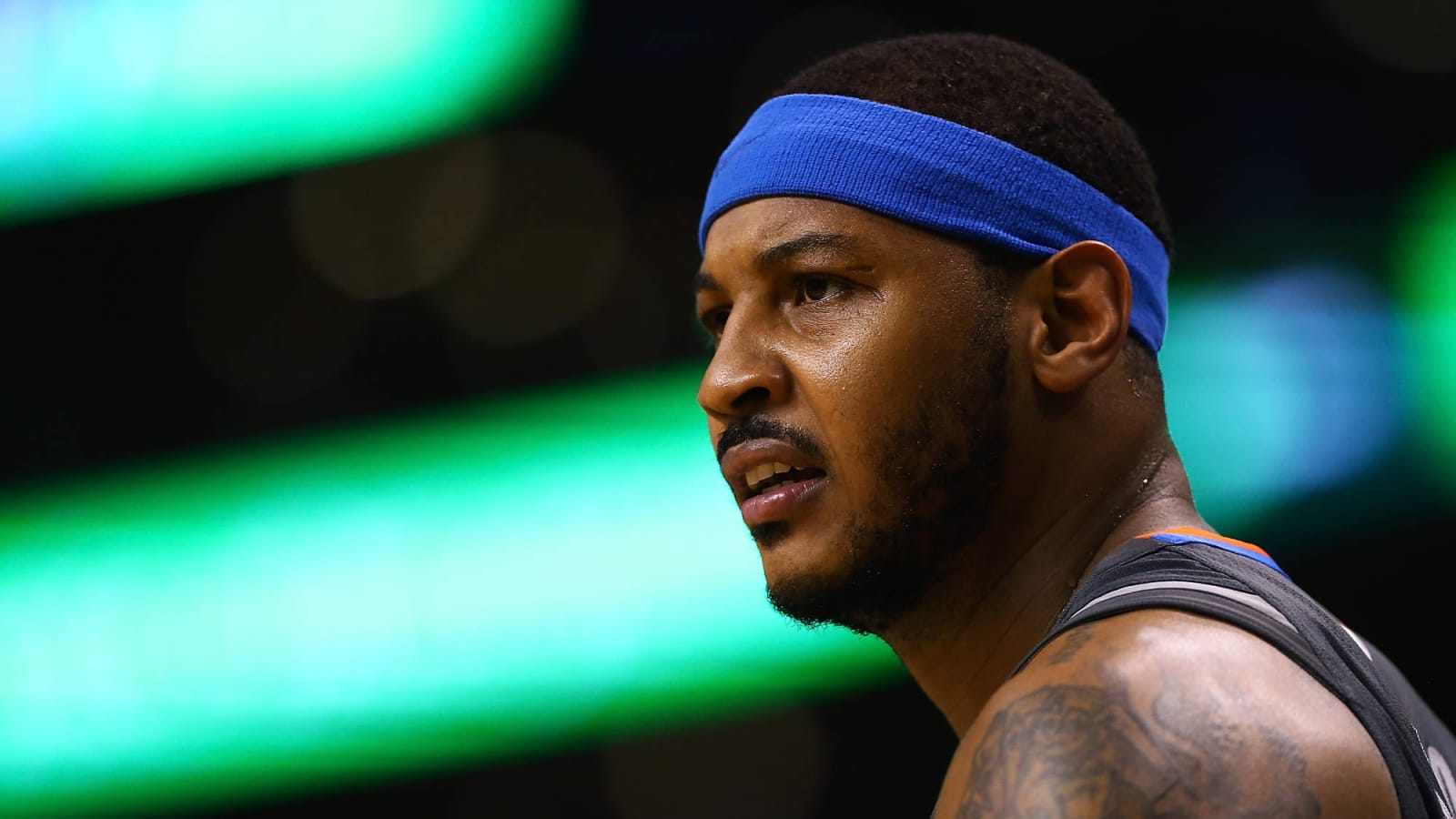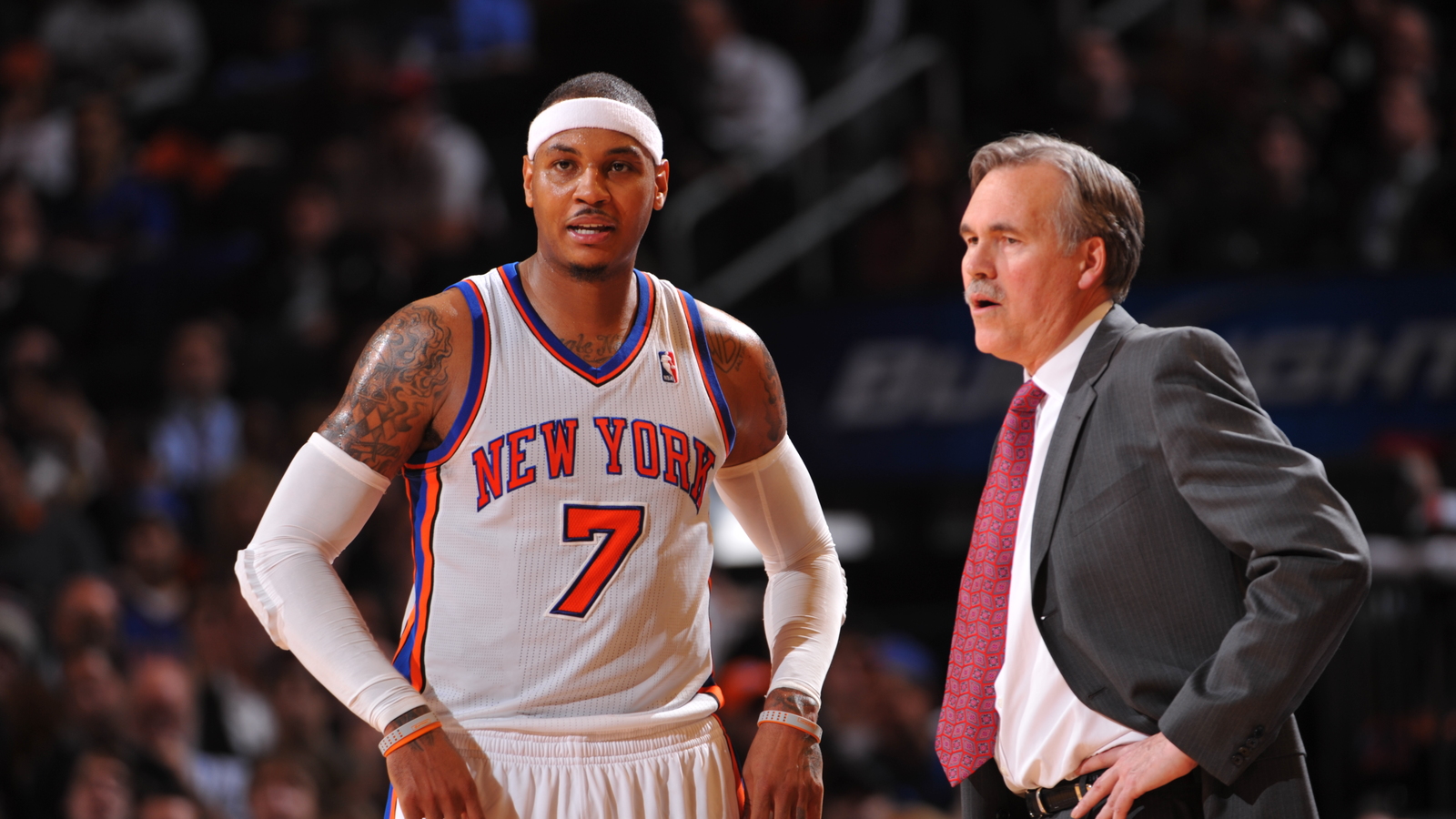
Houston has a lot of questions to answer with the Melo signing
Carmelo Anthony, who was recently traded from the Oklahoma City Thunder to the Atlanta Hawks and subsequently waived, is set to become a member of the Houston Rockets for the veteran’s minimum of $2.4 million for the season. It’s a move that advocated by Houston’s current stars and was expected by the league’s insiders. While Anthony is coming off a rough season, it’s a move that could bring some good to Houston, but there are plenty of reasons that this could go terribly, too.
From the jump, this is already a win for the Rockets. Last summer, the team was engaged in trade talks with the Knicks to acquire Anthony for youth and assets. Instead of gutting the team to bring in Anthony to play alongside James Harden and Chris Paul, who they had just traded for, the Rockets get Anthony this season without sending any players to New York (OKC let go of Enes Kanter for Melo) AND they don’t have to take on his massive contract. Even if Anthony has another rough season, it’s only for a year on the veteran’s minimum.
While the Anthony signing wasn’t entirely necessary, they did have a bit of a void to fill with Trevor Ariza leaving for Phoenix and Luc Mbah a Moute leaving for the Clippers — both in free agency — Anthony becomes another wing to help space the floor for the Harden-Paul-Clint Capela core. While on paper, Anthony to Houston seems like things may go a bit easier than his year in Oklahoma City, there are still quite a few questions to be answered on both ends of the floor.
The most glaring questions, obviously, come on the defensive end of the floor — especially now with both Ariza and Mbah a Moute gone. When healthy, both players gave Houston the defensive flexibility to switch everything. Houston produced the sixth most efficient defense last year and pushed the Warriors to seven games in the WCF not because of their ability to score, but their ability to keep the Warriors out of their comfort zone. At their best, there was constant pressure on the ball, they took away passing lanes and cut down the number of off-ball runs to the basket. For a coach and a star who aren’t historically known for their work on that side of the ball, the Rockets were a 65-win team for their commitment to getting stops as they were for their ability to get buckets.
Melo, on the other hand, was one of the NBA’s worst defenders last season, and at 34-years-old, we can’t expect any real jumps on that end. The Thunder lost to Utah in six games in large part because of Anthony’s struggles on the defensive end. Utah’s entire offense was predicated on creating favorable matchups out of P&R sets, and when Anthony was on the floor, that matchup was rookie Donovan Mitchell cooking Anthony as often as possible. In that series, Anthony was a minus-58 in the 194 minutes he was on the court, while Oklahoma City was a collective plus-32 in the 94 minutes he was off.
Offensively, Anthony wasn’t any better in the postseason, scoring just under 12 per game on 37.5 percent shooting. He shot 21 percent from three while posting the highest 3-point attempt rate of his postseason career. He was objectively and subjectively bad in the postseason, and there is no statistical measure nor was there anything gathered from merely just watching that would suggest anything otherwise. His regular season, however, had enough peaks to suggest that he could still provide some value for Houston.

One of the most fascinating aspects of Anthony joining this Rockets team at this time in his career is how he and head coach Mike D’Antoni might align. Anthony has to know that he’s the third option at best on this team, and if he shares the floor with Harden, Paul and Capela, he could very well be the fourth — or fifth — option depending on whether Eric Gordon is in a groove. D’Antoni and Anthony had very public disagreements about how the team should be run while they were in New York together. Anthony wanted to play a "clear it out, let me do what I do" offense while D’Antoni was very much interested in ball movement, space and pace.
This past season, Houston was the best at running isolated sets with Harden and Paul handling the overwhelming majority of the iso work. Where they faltered against Golden State is when the ball was taken out of the stars’ hands late in the shot clock, forcing either Ariza or Gordon to create looks on their own in big moments. Anthony, of course, was one of the league’s premier one-on-one players in his prime, and with a year playing in a role in which he’s not the primary option, creating looks late in the clock could be where Anthony thrives.
Just two years ago, Anthony was one of the NBA’s best spot-up shooters. Sharing the floor with both Derrick Rose and Kristaps Porzingis freed him up along the perimeter, and he knocked those shots down at a .422 clip — which was better than Kevin Durant, Bradley Beal, CJ McCollum and Paul George. While Anthony didn’t even approach that last season, playing alongside two of the best creators in the NBA in Harden and Paul, along with the attention that Capela draws in his runs to the rim, could free Anthony up for the kind of open, catch-and-shoot looks that he thrived with during his last season in New York.
A huge reason why he struggled in Oklahoma City is because of the way the offense was designed. Anthony was set up to fail playing against two other iso-heavy players in an otherwise stagnant offense. Off-ball movement was minimal, and the iso-sets weren’t run with any other purpose than to see if a player could create his own shot. While Houston will continue to be iso-heavy, there is a purpose for everything. Harden and Paul are looking to create for every player on the floor, and the offense is designed to create good, efficient looks at the rim or beyond the perimeter. Harden and Paul are two of the best at drawing defenders from everywhere on the floor and finding open players on kick out passes. The ball moves beautifully around the perimeter once the defense is compromised — and this is the exact compromise that could bridge the gap between what Anthony wanted and what D’Antoni wanted while in New York.
Anthony may continue to be a ball stopper, but more often than not, he’s going to catch with an open look at a three-pointer or an open driving lane. There will be less work once he makes a catch, which should do wonders for his efficiency. His presence as a small-ball four really opened things up for Steven Adams in Oklahoma City — not that Capela needs it — and the lane could be even easier to navigate this season if Anthony can find his rhythm early and often.
Houston is maybe the only team in which it made sense to take on this version of Anthony. It would have helped if they could have kept one of Ariza or Mbah a Moute for end of game defensive possessions, but Anthony around this cast is less of a problem that it would have continued to be in Oklahoma City. At least that’s what it feels like three months before the start of the season. Things could go either way, but Houston has high hopes that D’Antoni and his stars can work it out.
More must-reads:
- Rockets have worse odds to win NBA title with Carmelo?
- Donovan Mitchell's 50-burger goes to waste as Magic dominate the offensive glass to force Game 7
- The 'Highest career PPG in the playoffs' quiz
Breaking News
Customize Your Newsletter
 +
+
Get the latest news and rumors, customized to your favorite sports and teams. Emailed daily. Always free!

